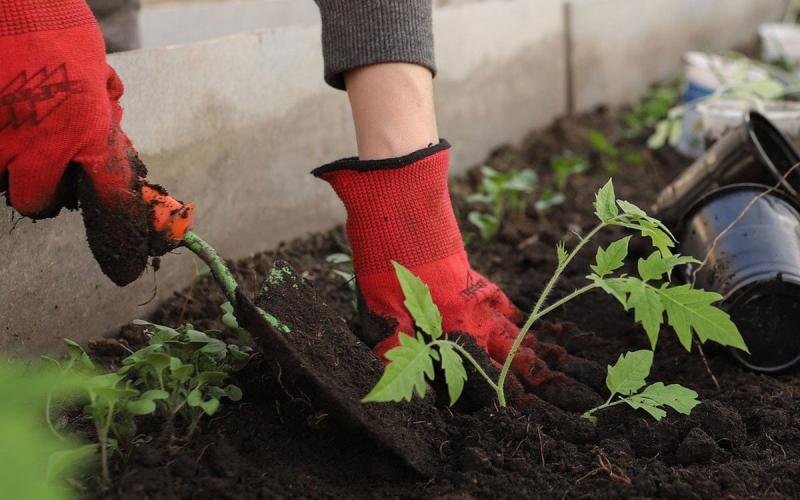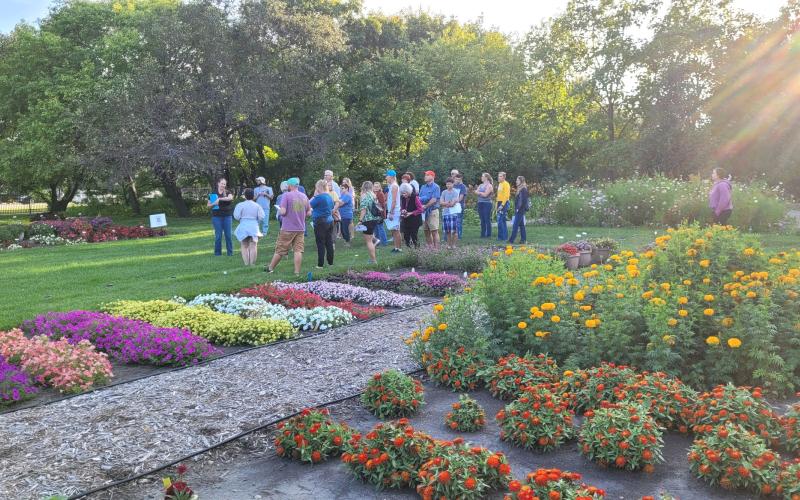Overview

Nostoc spp. is a genus of cyanobacteria, a photosynthetic microorganism that forms colonies or filaments in gelatinous masses (Figure 1). They are dark green and become black and crusty as they dry, but will rehydrate when sufficient moisture is present. At a glance, Nostoc may resemble animal droppings or scat. Cyanobacteria are found in some of the oldest fossils ever discovered, with Nostoc-like fossils appearing over 400 million years ago. There are over 200 recognized Nostoc species worldwide, colonizing a wide range of environments. In South Dakota, Nostoc commonly appears in home lawns and pastures, notably in patches where grass is not growing, especially after periods of rain (Figures 2 and 3). Additionally, it will grow on hard surfaces such as pavement or stones, particularly in areas that remain wet, including greenhouse or plant nursery floors. Informal names given to Nostoc include witch’s butter, witch’s jelly, star jelly, or star slime.


Biology and Lifecycle
Cyanobacteria differ from most other bacteria in that they can produce their own food through photosynthesis, while most bacteria rely on external sources for carbon and energy. Like plants, Nostoc contains chlorophyll, the green pigment that captures sunlight to produce carbohydrates. In addition to photosynthesis, Nostoc performs the unique process of nitrogen fixation, typically associated with leguminous plants. It takes nitrogen gas from the atmosphere and converts it into a form that other organisms can use. This process occurs in specialized cells called heterocysts, which are larger than typical cyanobacterial cells and lack the ability to photosynthesize. Instead, they fix atmospheric nitrogen and supply it to the surrounding photosynthetic cells, which in turn provide the heterocysts with carbohydrates for energy.
Management
Nostoc itself does not cause harm to plants or animals. Concerns are primarily related to its impact on the aesthetics of home lawns or potential safety issues when it grows on hard surfaces, such as in greenhouses or plant nurseries. The following list prevention and management recommendations:
- Promote healthy turfgrass establishment: Core aeration and minimizing soil compaction can reduce conditions that favor Nostoc establishment. Tilling areas where Nostoc is already present may encourage its spread, whereas core aeration helps address poor drainage and soil compaction without promoting growth.
- Improve drainage and reduce moisture: Nostoc grows best in areas that are frequently wet or water-logged. Reducing moisture or improving drainage in problematic areas can help reduce growth.
- Remove small patches manually: For limited areas on turfgrass or hard surfaces, carefully skimming off Nostoc with a flat-edged shovel can be effective. Care should be taken to avoid damaging the surrounding turf.
- Manage soil fertility: Research has indicated that high phosphorus levels can stimulate Nostoc growth. Evaluate soil fertility needs and consider reducing or eliminating phosphorus fertilizers if appropriate. Note that lowering phosphorus levels in soil can be challenging.
- Chemical management in controlled environments: In greenhouses and nurseries, certain herbicides targeting algae, moss, and cyanobacteria (including Nostoc) may be used. Products containing potassium salts of fatty acids (herbicidal soap) or pelargonic acid are among those commonly applied. However, chemical control is often limited, so emphasis should remain on the preventative measures described above. Any product applied to turfgrass should be used strictly according to the label instructions.
References
- Franklin, J. 2021. Nostoc. Clemson Cooperative Extension.
- Laughinghouse, D., Berthold, D., Marble, C., and Saha, D. 2025. Biology and Management of Nostoc (Cyanobacteria) in Nurseries and Greenhouses. University of Florida.
- Geist, L. 2020. Nostoc. University of Missouri Extension.
- Splawski, C. 2023. Nostoc. Michigan State University Extension.


